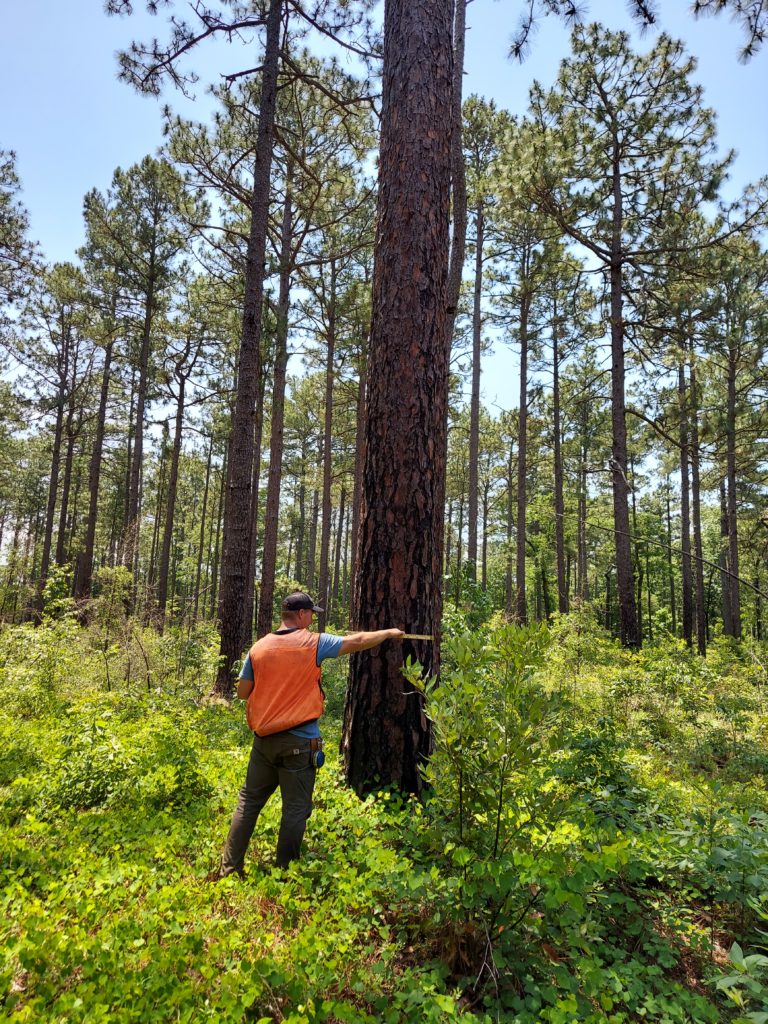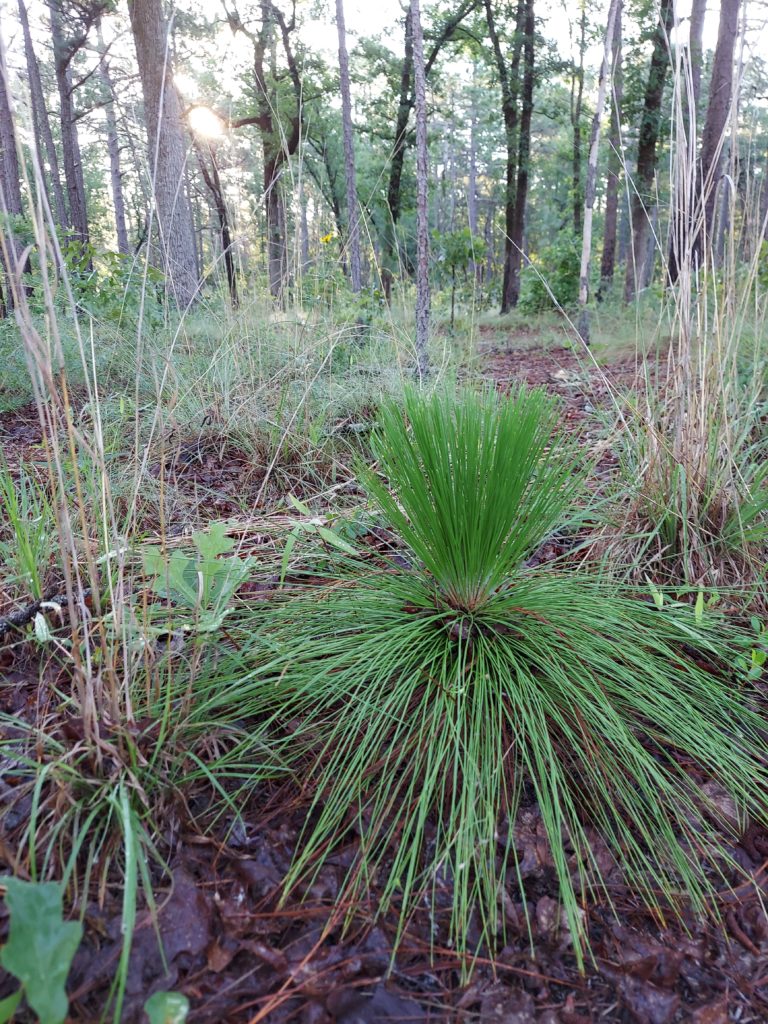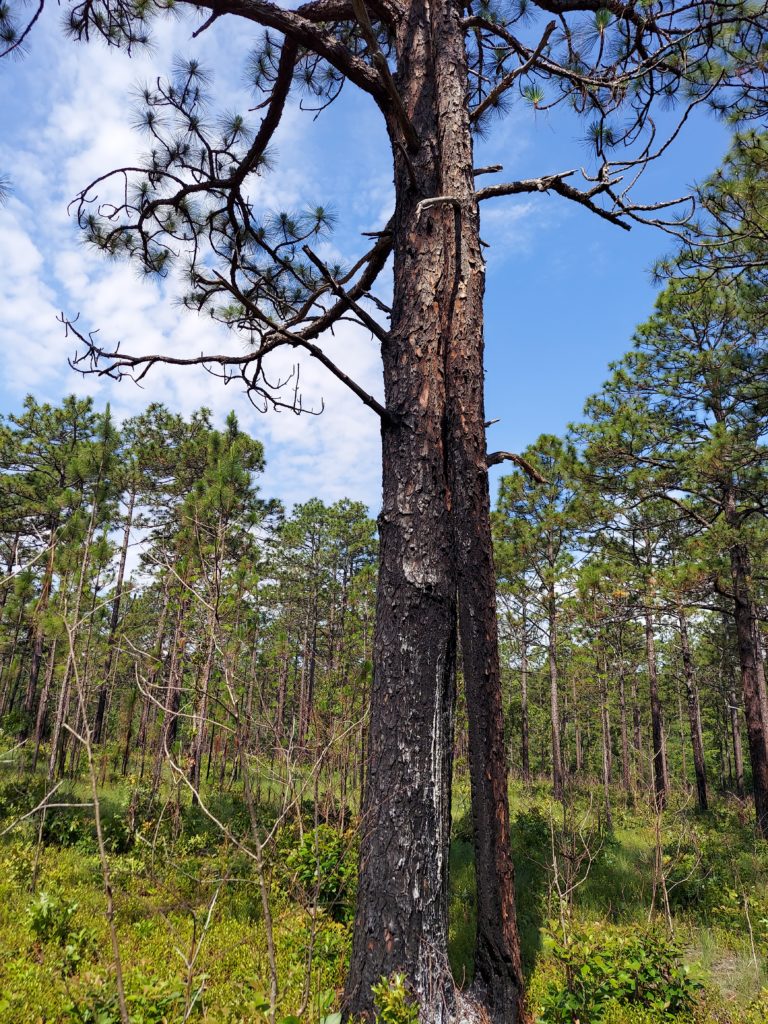Intern Coulter shares what he learned
Written by Coulter Nyenhuis. Editor’s note by Mike Lynch.
 I’m currently a Masters of Forestry student at Northern Arizona University. I have been lucky to travel all across the United States. This has helped me to appreciate the public lands that provide multi-use opportunities on an array of diverse landscapes. I have always had a passion for conservation and how it ties in with forest management and timber production. To many, managing for pulpwood and saw logs may seem separate from ecosystem management. However, as most Guild e-newsletter readers know, many landscapes benefit from disturbance created by logging operations, and the removal of over story trees that will promote regeneration of desired forbs and grasses. Additionally, conducting prescribed burns after harvesting operations, ensure natural processes occur while promoting growth of desired tree species.
I’m currently a Masters of Forestry student at Northern Arizona University. I have been lucky to travel all across the United States. This has helped me to appreciate the public lands that provide multi-use opportunities on an array of diverse landscapes. I have always had a passion for conservation and how it ties in with forest management and timber production. To many, managing for pulpwood and saw logs may seem separate from ecosystem management. However, as most Guild e-newsletter readers know, many landscapes benefit from disturbance created by logging operations, and the removal of over story trees that will promote regeneration of desired forbs and grasses. Additionally, conducting prescribed burns after harvesting operations, ensure natural processes occur while promoting growth of desired tree species.
The Carolina Sandhills National Wildlife Refuge (CSNWR) is a 46,000 acre refuge that manages for the long leaf pine ecosystem. The long leaf pine woodlands have been reduced to two percent of the original area prior to European settlement due to land fragmentation, agroforestry, and farming. The long leaf pine is a slow growing, resilient keystone species in this fire maintained ecosystem. The long leaf pine’s resistance to fire comes from its long needles that protect the seedlings’ and saplings’ terminal bud, ultimately enabling the young trees to take advantage of the abundance of resources after fire. The thick bark on the mature trees provides resistance to low intensity fires which ultimately provides an open seedbank for the cones. With regular disturbances this ecosystem can exist in perpetuity. Without fire, the turkey oaks and sweetgum will take over the mid-story and shade out the grasses and legumes. This will provide fuel for hotter fires, ultimately leading to stand replacing fires. The management that occurs on the CSNWR helps to preserve this diverse ecosystem for the plants and wildlife that depend on it.
 Our main task during the internship was to conduct a 5% inventory of approximately 2,300 acres within the refuge. This inventory included a variable plot sample of merchantable trees, as well as stand metrics to help drive management decisions in the future. Additionally, we were able to support the wildlife biologist on the refuge by conducting dove banding and recording cavity trees that house the endangered red-cockaded woodpecker. This helps biologists to gauge populations and distributions.
Our main task during the internship was to conduct a 5% inventory of approximately 2,300 acres within the refuge. This inventory included a variable plot sample of merchantable trees, as well as stand metrics to help drive management decisions in the future. Additionally, we were able to support the wildlife biologist on the refuge by conducting dove banding and recording cavity trees that house the endangered red-cockaded woodpecker. This helps biologists to gauge populations and distributions.
The highlight of my opportunity at the CSNWR was being able to develop my masters project in conjunction with my summer internship. The refuge has developed a 1,200 acre bobwhite quail focal area within the refuge. In order to promote ideal quail habitat, the over story should be thinned to a basal area of 30 square feet per acre, and prescribed fire intervals should be shortened to prevent undesired hardwoods from taking over the understory. Providing additional disking to openings and fields will promote legumes and grasses needed for quail brooding cover. Within the quail focal area there is a stand that has not had any recent disturbance. We were able to conduct and inventory of the stand and start to develop management goals. Additionally, we were able to walk through the stand with some of the South Carolina State quail biologists. This meeting was extremely productive, and helped to shape our management goals as well as develop a prescription for the stand.
 As a bird dog lover and a diehard upland bird hunter, I was excited to get the opportunity to work on this project and learn from the biologists and foresters that have been shaping this landscape.
As a bird dog lover and a diehard upland bird hunter, I was excited to get the opportunity to work on this project and learn from the biologists and foresters that have been shaping this landscape.
Editor’s note: The Forest Stewards Guild has partnered with the US Fish and Wildlife Service for the last several years to provide students with hands-on experiences to learn how forestry and wildlife management work together on public lands. These 12-week positions are hired by the Guild and supervised and based at the Carolina Sandhills National Wildlife Refuge in McBee, South Carolina.
Coulter Nyenhuis and Aubrey Lanier were selected from a strong pool of applicants for these positions and both interns did a wonderful job. We are featuring articles written by each of them. Check back next month for Aubrey’s article. We wish them both all the best as they complete their education and enter the work force.
We will be offering this 12-week summer internship again in 2022. Be on the lookout for a posting next spring at http://foreststewardsguild.org. Pease also check this page for other opportunities with the Guild and our terrific partners. If you would like to help recruit well-deserving and potentially interested students, or if you would like to apply yourself and have questions, please contact Mike Lynch at mike@forestguild.org or 608-449-0647.
